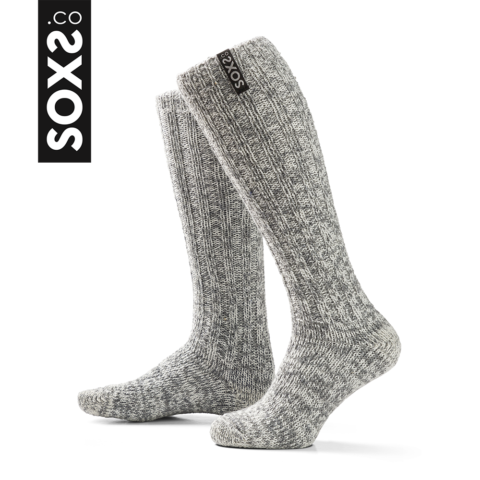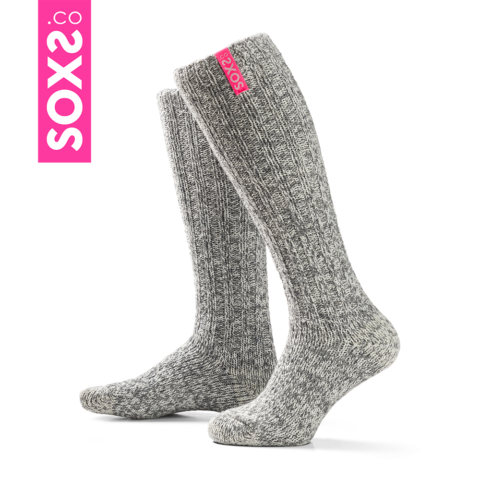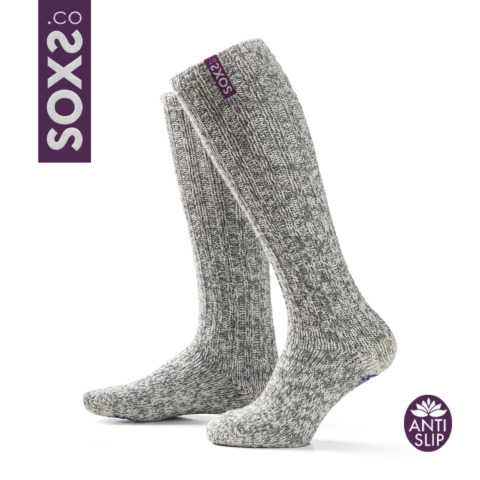Soft warm premium wool socks
Gift ready, stylishly packaged
Orders placed before 1:00 PM will be shipped today (on weekdays) PLEASE NOTE: The delivery time of Pimp My Soxs is 5 working days!
Winter sports require proper foot protection to keep you comfortable in cold conditions. Wool socks offer excellent warmth and comfort while you enjoy skiing, snowboarding, or hiking in snowy outdoors. These natural fiber socks provide several advantages over synthetic alternatives, from moisture management to temperature regulation. Let’s explore why wool socks are a practical addition to your winter gear and how to select the right pair for your adventures.
Wool socks excel at keeping your feet warm during winter sports through natural insulation. The wool fibers create tiny air pockets that trap body heat while allowing moisture to escape, helping your feet stay dry and comfortable throughout the day. This moisture-wicking property is particularly valuable during active winter sports where sweat can lead to cold feet and blisters.
Beyond warmth, wool socks offer excellent breathability and natural antibacterial properties. Your feet remain at a comfortable temperature without overheating, even during intense activity. The wool’s natural resistance to odor means your socks stay fresh during long days on the slopes or trails. These practical benefits make wool socks a reliable companion for winter adventures.
While synthetic socks might cost less initially, wool socks provide superior performance for winter sports. Synthetic materials often can’t match wool’s natural ability to regulate temperature and manage moisture effectively. Wool keeps your feet warm without causing them to overheat or become sweaty, creating a more comfortable experience throughout your winter activities.
Wool socks also maintain their shape and resilience better than many synthetic options. The natural elasticity ensures they provide consistent support and don’t sag or bunch up inside your boots. This durability, combined with wool’s natural odor resistance, makes these socks a worthwhile investment for regular winter sports enthusiasts. For dependable comfort in cold conditions, wool socks offer distinct advantages over synthetic alternatives.
Finding the perfect wool socks for skiing involves considering several practical factors. Thickness matters—medium-thick socks often provide sufficient warmth without compromising the fit of your ski boots. Look for socks with a snug yet comfortable fit to prevent movement that could cause friction and blisters.
Strategic cushioning in high-impact areas like heels and toes enhances comfort during long days on the slopes. For length, knee-high socks work well with ski boots by providing additional warmth and preventing snow from entering your boots. Consider the specific conditions you typically ski in—colder environments might require thicker wool socks, while more active skiers might prefer slightly thinner options for better moisture management.
While wool socks perform exceptionally well for winter sports, it’s worth noting their few limitations. Quality wool socks typically cost more than synthetic alternatives, though their durability and performance often justify the investment. They also take longer to dry than synthetic materials, which is worth considering if you’re planning multi-day activities.
Some people with sensitive skin may have concerns about wool irritation. At SOXS, we use high-quality, soft wool that minimizes this issue, providing comfort even for those with sensitive skin. With proper care and selection, these minor drawbacks are easily managed, allowing you to enjoy the significant benefits wool socks offer during winter sports.
Proper care ensures your wool socks remain comfortable and functional season after season. Hand washing with mild soap is ideal for preserving the natural qualities of the wool. If using a washing machine, select a gentle wool cycle with temperatures no higher than 30°C and use a specialized wool detergent for best results.
Air drying is essential for maintaining your wool socks’ shape and elasticity. Lay them flat rather than hanging them, and keep them away from direct heat sources that could damage the fibers. With these simple care practices, your wool socks will continue to provide reliable warmth and comfort throughout many winter seasons. Curious about which wool socks might best suit your winter activities? Explore our collection at soxs.co to find your perfect pair.

Knee height

Knee height

Knee height